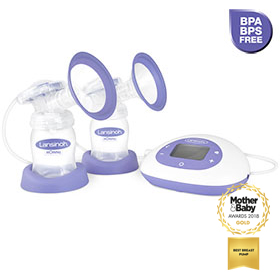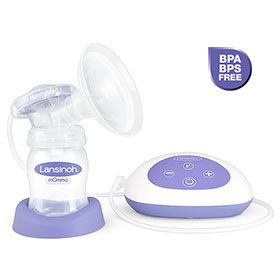Advice Articles
- Home
- Advice Articles
- Breastfeeding
- Breastfeeding Siblings, Twins or More
Breastfeeding Siblings, Twins or More
Expecting Multiples
NICE Guidance (2011) advises care for women expecting multiples should be provided by a nominated multidisciplinary team consisting of a core team of named specialist obstetricians, specialist midwives and ultra-sonographers, all of whom have experience and knowledge of managing twin/triplet pregnancies. NICE also advises an enhanced team for referrals which should include a perinatal mental health professional, a women’s health physiotherapist, an infant feeding specialist and a dietitian.
Within the NHS context, this means a good deal of hospital input – although NICE (2011) does recommend that as much care as possible take place as close as possible to the woman’s home, and that hospital appointments be kept to a minimum. Alternative models of care may offer a different balance, and midwives working independently (www.imuk.org.uk) or as part of other organisations such as Neighbourhood Midwives (http://www.neighbourhoodmidwives.org.uk/midwifey-service.php), One to One Midwives (www.121midwives.co.uk) or UK Birth centres (http://www.ukbirthcentres.com/independent-midwives) will need to ensure they have the referral and support networks established that they and the family will need, whilst enjoying the benefit of being able to hold much of the consultation time within the woman’s home.
Discussing infant feeding
Many opportunities will arise to discuss infant feeding as the woman and her family prepare for the new arrivals. It is part of your midwifery remit to ensure she has the information and education she might need in order to prepare for, and to embrace her new breastfeeding relationships, and that her partner and family are well prepared for how they may best support her in that (NMC 2012).
Much of what you discuss with her will depend on her birth plans. She may well have chosen an elective early birth, and it may be appropriate to consider harvesting some expressed milk in anticipation of the babies’ arrival. Mum needs to be aware that expressing her milk (EBM) from 36 or 37 weeks may encourage labour to commence early. She may also want to put a ‘feeding plan’ in place so that it is clear to health professionals at the time of the birth if she has stored EBM, and that she intends to breastfeed. With a ready-established milk supply, the babies may suckle less than health professionals anticipate in the early hours, so it is well worth having a written plan as to what the expectations and plans are.
Expressing Milk
To show her how to hand express and collect her milk in small syringes, and to discuss with her the types of breast-pump available commercially (*) will help support her in making her decisions about feeding, and in having the tools she needs. The Lansinoh 2 in 1 Electric breast pump is a closed system, meaning that the theoretical risk of milk spores accumulating in the tubes or motor is eliminated. It also has a rotary motor with dual controls, meaning that it gives a mother much more flexibility in the style and suction level of pumping, which has been recognised as facilitating a greater yield (Becker et al. 2015). It can be used both as a single or double pump, and can be battery operated if required.
Once babies have arrived
Once the babies have arrived, support and encouragement will be paramount. Parents may need reassurance that bottle feeding would be just as hard, if not harder, and that the benefits of the babies being fully breastfed will be huge, in terms of minimising illness and other artificial milk-related problems. Well-meaning family and friends can often apply pressure to give a bottle or to express so someone else can feed, so if you haven’t had an opportunity to educate them antenatally, then now is the time!
See *page for supporting a family whose babies are in special care.
When Mum and babies are together, Mum will still need plenty of support and reassurance that her body will produce enough milk for more than one baby, that by responding to baby’s early feeding cues (*link early cues/breast refusal) her supply will be established, and that the babies will get what they need.
Supply
Generally speaking, there will be no need to supplement twins, and any supplementation may disrupt skin to skin and responses to babies’ early feeding cues, or potentially cause confusion. If you or a mother are concerned about her supply, then feeding both babies together will help by increasing prolactin levels.
It may be necessary to express (*link to expressing/pumps) milk in order to stimulate supply if one baby is not feeding so well.
An explanation of the small size of babies’ stomachs when they are born, and that breastmilk begins to be absorbed by the soft mucus membrane in baby’s mouth, even before it arrives in the stomach may help Mums to feel confident that their babies are getting what they need.
Position, positions and attachment
Pay special attention to good positioning and attachment(*link) in order that any difficulties with sore nipples or inadequate milk transfer are avoided. However, it is equally important not to overwhelm a new mother of multiples with strict criteria of how to position and latch. It may be useful for her to understand the ideas of biological nurturing and self-latching (Colson, 2010), which will allow her the flexibility to position herself and the babies in a way that is comfortable for them all. A mother will also come to her own decision as to whether she feeds her babies together, or separately. Either way, the babies get plenty of skin contact and love, and either way, Mum would be well-advised to seek extra help around the house, for her partner to take on more of the household share, and also to ensure she is well-nourished and hydrated.
Some mothers may express a desire to have each baby have their ‘own’ breast. Although this potentially works fine from a supply perspective, it is not necessarily advisable from a development perspective, as baby has visual stimulation from one direction only (Mohrbacher and Stock 2008). If Mum would like each baby to be on one side only, suggest that they swap sides every day or so. Otherwise, there are no hard and fast rules as to which baby feeds from which breast when, as long as they are both thriving.
Sleep
In addition to our usual advice about trying to rest when baby does, the mother of multiples may need some extra information and support in terms of how she manages night feeds. It is important that she understands the risks of asking someone else do give the babies feeds, in terms of her supply, (and the need to express for every feed she misses) and in terms of nipple teat confusion. It may help her to talk to other mums who are co-sleeping, and to ensure she has balanced information about how to safely share a bed with her baby(s) (https://www.tamba.org.uk/Parenting/First-Year/Sleep).
Feeding more than two
With more than two babies to feed, fully breastfeeding is still possible (LLLI 2004), though a little supplementation may be required in the earliest days, while milk supply is being established. It is advisable for Mum to document feeds, dirty and wet nappies of each baby until breastfeeding is well established, in order to ensure each baby is getting what he needs.
Sometimes a baby who is a multiple can benefit from the ‘let-down’ that their sibling creates, and not fully drive their own supply themselves. Observe carefully that babies are sucking and swallowing at the breast, and draining the breast well at a feeding. Improved positioning and attachment may help, or using gentle breast compressions to encourage gulping.
Examples of breastfeeding positions for multiples
PICs. (see p376 of breastfeeding answer book- work in progress c/o Becky)
Tandem Feeding
Tandem feeding is the expression used to describe feeding siblings of different ages at the breast.
There are no hard and fast rules about tandem feeding, although Mum may feel she wants to give the new baby ‘first share’. Sometimes older children will notice a change in their milk during Mum’s pregnancy, and may self-wean at that time. Others will continue to enjoy. It can be very important for siblings to bond with one another over feeding together, or equally, it can be reassuring to the older sibling who is learning to cope with a new younger brother or sister. It is not uncommon for toddlers who have already weaned to come back to the breast, or at least to ask. If a Mum doesn’t feel tandem feeding is for her, then it is worth talking with her about this antenatally, and thinking about other ways to reassure and support the older sibling.
Generally, Mum’s will instinctively find a way that works for them, and milk will be plentiful for both children. It may also help Mum to find other women who are tandem feeding, for support.
Bibliography/ References Becker et al. (2015) “ Methods of milk expression for lactating women: Cochrane Review.” Wiley and Sons. Colson S (2010). What happens to breastfeeding when mothers lie back? Clinical applications of biological nurturing. Clinical Lactation LLLI (2004) “The womanly art of breastfeeding” 7th Ed. La Leche League International. Illinois. Mohrbacher and Stock (2008) “The Breastfeeding Answer Book” La leche League International. Illinois. NICE (2011)“Multiple pregnancy The management of twin and triplet pregnancies in the antenatal period” Clinical Guideline 129 NICE. UK. NMC (2012) “Midwives Rules and Standards” Nursing and Midwifery Council, UK. https://www.tamba.org.uk/Parenting/First-Year/Sleep
Related Categories
You May Also Need
-

2 in 1 Double Electric Breast Pump
Lansinoh’s 2-in-1 Electric Breast Pump is the very best option for mothers who want comfort, flexibility... View -

Feeding Bottle with NaturalWave® Teat
In order to achieve your breastfeeding goals, you may choose to express your precious breast milk and... View -

HPA® Lanolin Nipple Cream for Sore & Cracked Nipples
Sore nipples are very common during breastfeeding and can often be a result of the uncomfortable positioning... View -

Single Electric Breast Pump
Lansinoh’s Single Electric Breast Pump has been designed to help you express your precious breast milk... View
